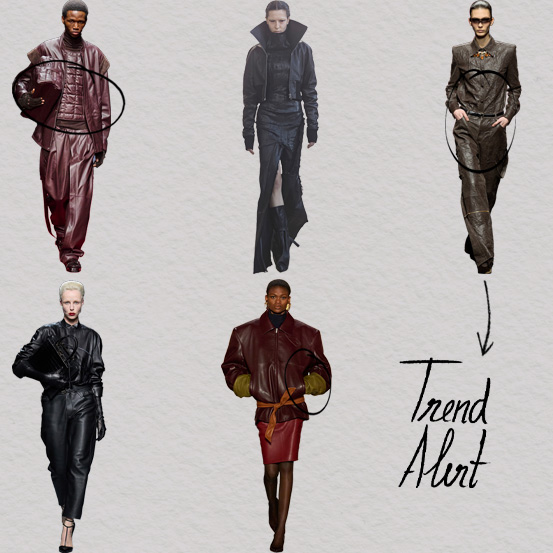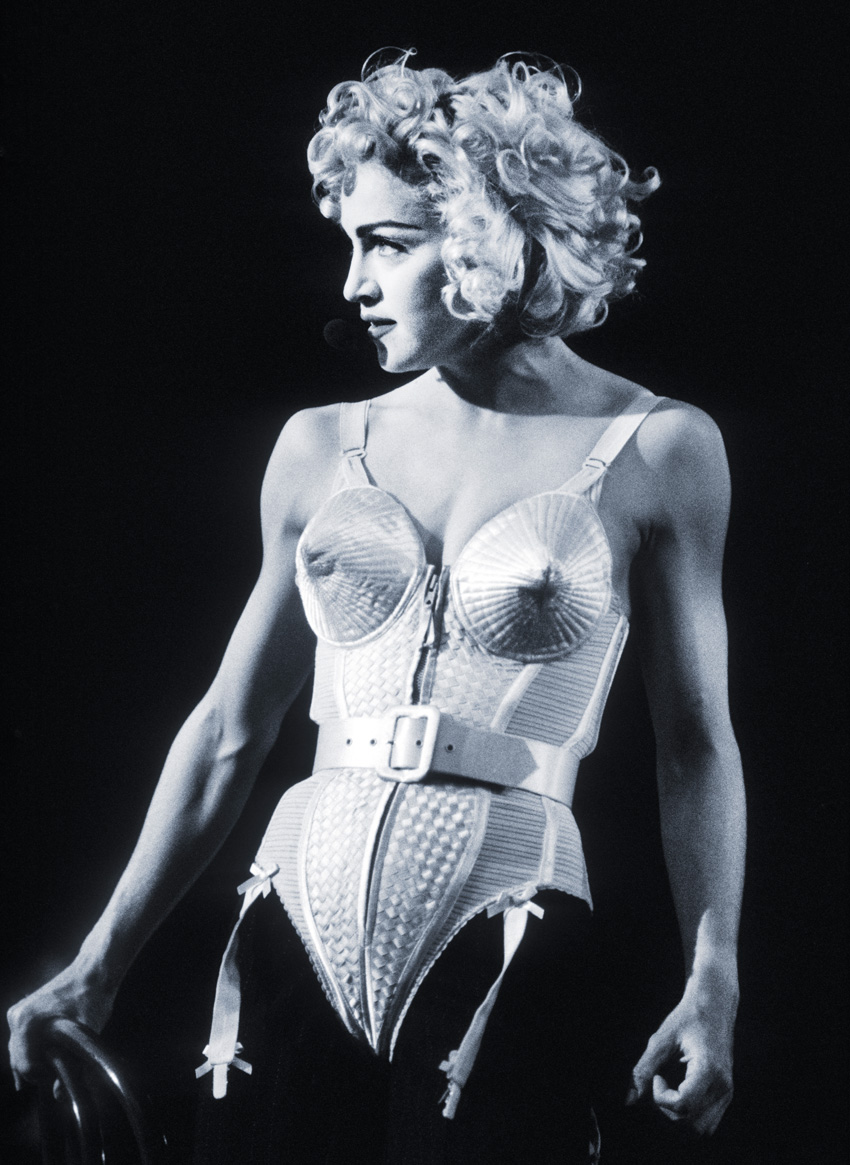Madonna in the iconic Jean Paul Gaultier corset on the Blonde Ambition Tour in 1990. Photography: Gie Knaeps / Getty Images.
Rebellious and eternally daring, it is in the journey between the worlds of fashion and music that legendary artistic identities are born. Beyond singles that become hits, irreverent clothing becomes a natural extension of musical genius and elevates performers to ultimate icons.
What is the line between a simple musician and a true artist? Beyond the notes and poems that transcend the musical score, the boundaries that mark the intimacy of an icon are not always easy to delineate. On (and off) the big stage, the best performances give life to artistic identities that unite genres, break norms and shape new cultural rhythms. In tandem, fashion and music mould the social landscape around us and, over the decades, musical artists have established themselves as cultural pioneers.
With bold presences that begin – but don't end – in songs that stand the test of time with distinction, fashion appears as a visual continuation of a performer's creativity. In a union between two unquestionable forces, fashion and music assume an intrinsically symbiotic relationship and it's in this harmony that we see mirrored trends and aesthetics that move between the two worlds. Between hits and tours, clothing has become an essential tool when it comes to creating an icon: think of Prince and his extravagant, glamorous looks that challenged the most persistent gender canons of the 80s. Or David Bowie and the constant reinvention of his ‘self’ throughout his musical career. It's through irreverent looks that we see big names in music construct performative narratives, and it's these artistic identities that allow musicians to explore the aesthetic limits of their individuality. When we look at this subject through a sociological lens, it becomes clear that creative expression is something that literally comes out of an entertainer's body – it's not for nothing that French philosopher and sociologist Jean Baudrillard argues that the body is, in itself, a form of fashion. Therefore, the way a performer uses and presents their own body on stage is fundamental to understanding the meaning of their artistic persona. Such is the case with Freddy Mercury; in a blaze of charisma and exuberance, the iconic status of the lead singer of Queen goes far beyond his musical skills. To the sound of songs like I Want To Break Free, the singer's theatrical and fearless wardrobe, which included an array of capes worthy of British royalty and dazzling bodysuits, was a natural extension of Mercury's musical identity, while at the same time playing with the principles of what was considered masculine and feminine.
More than just clothes, fashion has the power to transform perceptions and define new identities. It is in this spectrum of personalities that Madonna, eternal queen of pop, has reinvented her aesthetic over the decades. As the artist told The New York Times in 1989, “art should be controversial;” and between music videos for songs such as Material Girl and performances in a bodysuit with an (i)conical bra made by Jean Paul Gaultier, Madonna's wardrobe defies previously defined social norms with provocative looks that, together with a successful discography, guarantee her status as a true modern icon. With a similar (but infinitely bolder) approach, Prince tested the rules imposed by society with looks that radiated an eclectic and exuberant energy. From high heels to tailoring, without ever forgetting lace gloves, sequins, tassels and feathers – Prince's wardrobe refused to be governed by a single aesthetic, and he reinterpreted the visual essence of the 80s. In a kaleidoscopic universe of movements and references, Prince's peculiar style transgressed the traditional preconceptions of menswear and gave a new dimension to androgynous identities through looks that embraced a fluidity that is still hard to achieve today.
The truth is that each individual is unique and sometimes the construction of a mere stage persona proves insufficient to express an artist's creative identity in its entirety. In a composition of personalities and diverse selves where Freudian references are unavoidable, David Bowie embodied characters from outside his intimacy and took on the role of a human chameleon whose influence transcends the barriers of sound and style. Between avant-garde visual choices and a charisma that challenged notions of gender, the artist took on alter egos (directly translated from Latin to ‘another me’) like Ziggy Stardust to explore a multitude of references and influence cultural norms in a more liberated and carefree – but equally eccentric and daring – way.
It's on the big stages that the barriers between fashion and music dissolve into a dazzling narrative that shines even in the brightest of lights. In addition to a pitch-perfect timbre and hits that reach the top of the most varied charts, it's the personae represented by some of music's leading names that distinguish them as absolute icons and allow them to break mentalities and mould perceptions. As Prince sang in Uptown: “Now where I come from, we don't let society tell us how it's supposed to be. Our clothes, our hair, we don't care. It's all about being there.”
Translated from the original on "The Icons" issue, published November 2024. Full credits and stories in the print issue.
Most popular


Relacionados

.jpg)






